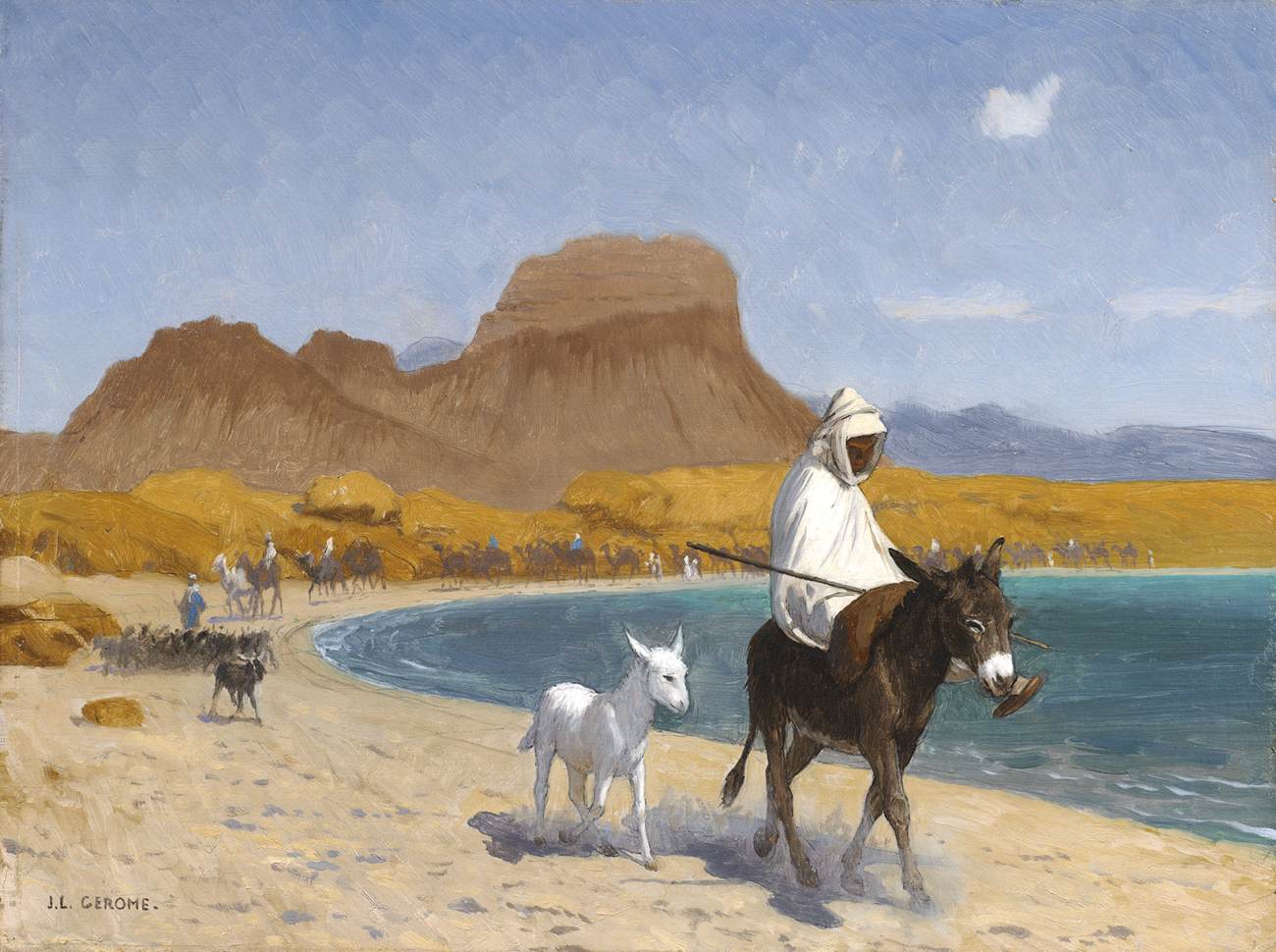Description
French artist Jean-Léon Gérôme's painting "The Gulf of Aqaba" is a 19th-century masterpiece depicting a stunning scene of the Red Sea. The work measures 27 x 36 cm and was painted in 1887.
What makes this painting so interesting is its highly detailed and realistic art style. Gérôme was known for his meticulous technique and his ability to create impressive light and shadow effects. In this work, he uses his ability to capture the beauty and complexity of nature.
The composition of the painting is impressive, with a panoramic view of the Gulf of Aqaba stretching to the horizon. The artist uses the technique of perspective to create the illusion of depth and distance. The minute details of the rocks, waves, and boats on the water are impressive, making the painting appear almost photographic.
Color is also a prominent aspect of this work. Gérôme uses a rich and vibrant color palette to capture the beauty of the landscape. The warm tones of the sun setting on the horizon contrast with the cooler tones of the water and sky.
The story behind the painting is also interesting. Gérôme traveled the world extensively, visiting the Gulf of Aqaba on several occasions. It was on one of these trips that he was inspired to create this masterpiece. The painting was exhibited at the World's Fair in Paris in 1889 and received highly positive reviews.
In short, "The Gulf of Aqaba" is a stunning painting that stands out for its detailed and realistic art style, impressive composition, and beautiful color palette. The story behind the work is also fascinating and adds additional value to this 19th century masterpiece.

